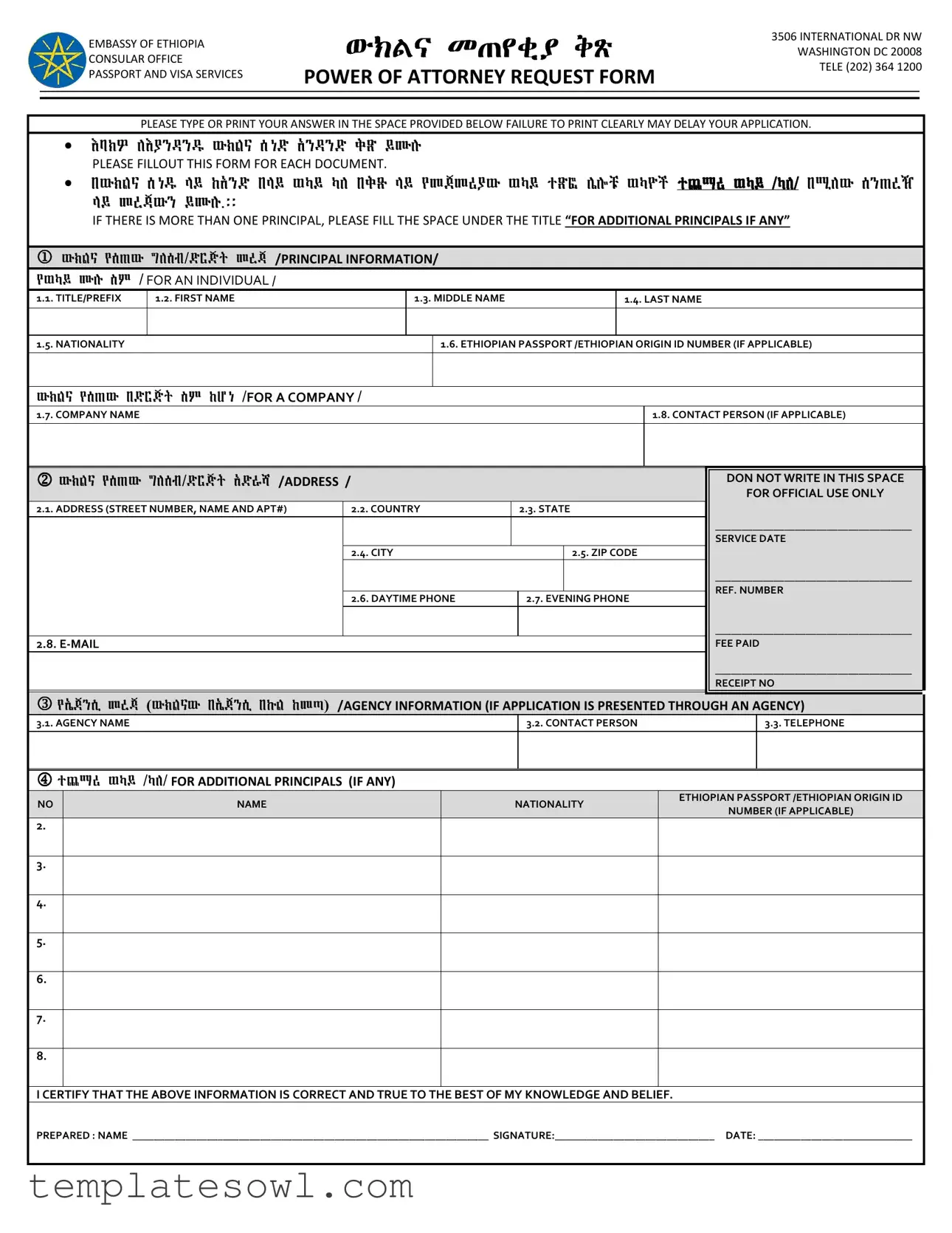What is the purpose of the Ethiopia Power of Attorney form?
The Ethiopia Power of Attorney form allows an individual or a corporate entity to designate someone else to act on their behalf in legal or financial matters. This designation grants authority to the appointed individual, also known as the attorney-in-fact, to handle specific responsibilities as outlined in the document. Whether it involves managing property, signing legal documents, or representing someone in various dealings, this form ensures legal recognition of the chosen representative's authority.
Who should fill out this form?
This form should be completed by the principal, who is the individual or organization granting the power of attorney. If there are multiple principals involved, each should fill out separate forms or provide their details under the designated section for additional principals. Additionally, if an agency is submitting the application on behalf of the principal, the agency's contact information must also be included in the form.
What information is required on the form?
The form requires several key pieces of information. For individuals, this includes the title, first name, middle name, last name, nationality, and if applicable, the Ethiopian passport or Ethiopian origin ID number. For companies, the form asks for the company name and a contact person. Other essential details include the principal's address, daytime and evening phone numbers, and email address. Clear and accurate completion of this form is crucial, as any errors or illegibility may delay processing.
How does one submit the Ethiopia Power of Attorney form?
What happens after submitting the form?
After submission, the consular office will review the form for completeness and accuracy. They will mark the submission with an official service date, reference number, and confirm the fee payment. If any additional information or documents are required, the applicant may be contacted. Once approved, the power of attorney can be utilized by the designated attorney-in-fact according to the scope outlined in the form.

